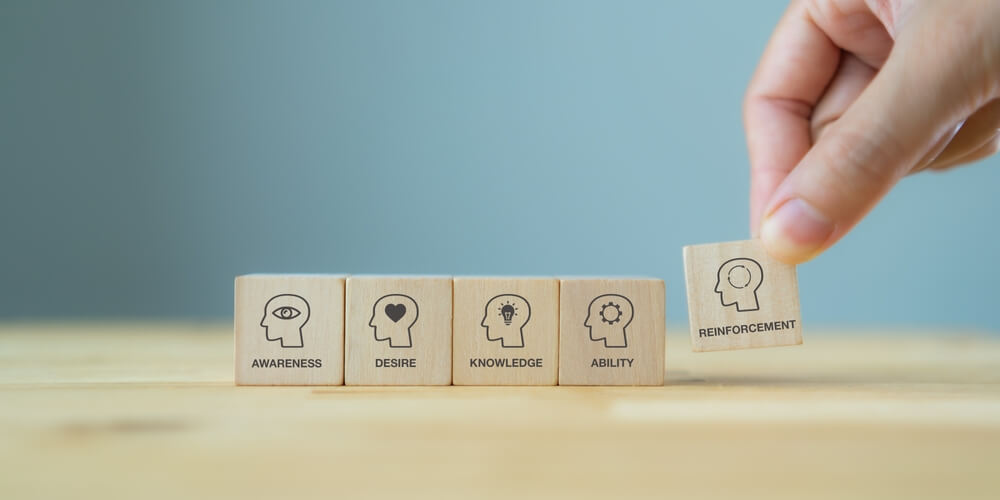Overcoming a Lack of Resources When Developing and Executing Capability Building Programs
Failure to secure necessary resources is one reason many capability building programs fail to get off the ground, let alone have strategic impact. The solution is simple. You need to reframe a program as an imperative for transformation and successful business performance.
How to navigate resourcing to develop and execute capability building programs
Securing resourcing is largely an issue of prioritisation. There are always resources available for organisational priorities. You just need to make a capability building program one of them.
The key is to create a need for changing ways of work. This is what capability building is all about: Rebuilding the workday from its barest bones to its most optimal form. At this level is the heart of your organisation’s execution engine.
Here’s one way to frame it courtesy of McKinsey. Most training experiences take place when rapid change is not necessary to counteract disruption, given disruption is largely episodic. That creates a steady state or status quo of learning structures (involving reward systems, budgeting, targets and reviews) which are simply not equipped to change gears as needed—and are only reactive when they do. Which makes everyone, from CEOs to leaders and line workers, ill-equipped to do the work that needs to be done to survive and even thrive amongst disruption.
Don’t be afraid to make this an organisation-wide transformation. McKinsey says it best again: Common sense is not always common practice. A capability-led program that has aggressive targets and creates internal alignment between all areas of business will have the most sustainable and exploitable results. Show clear costs goals and build a transformation team too, and you’ll win points with key stakeholders who you’ll need down the line.
A performance learning management system (PLMS) can help you in the goal-setting and alignment area. A PLMS is a dynamic, AI-powered platform designed to link L&D to the metrics that really matter: Performance. It codifies and operationalises the capabilities that drive organisational efficiency and enable employees to become impact players within the business.
Why do organisations find this such a big challenge and how do you overcome it?
Capability building programs are about institutionalising new ways of work. That shakes up the status quo and creates growing pains amongst the workforce. There are a few smaller challenges or mistakes that can be associated with a shock to the system.
- If you choose to centre a program on foundational-level capabilities (time management, as an example), your CEO may argue that it’s too simple to be a priority. Any program without CEO support will be dead on arrival.
- Failing to create influencers out of business leaders (with HR/L&D as program facilitators). That’s employee engagement straight out the window, since capability building is rooted in changing mindsets and most groups need a role model to showcase what that change looks like in action.
- Similarly, not making influencers accountable for change/results. It’s a low stakes game if their participation stops at participation.
- Relying on traditional training methods instead of embedding learning in the flow of work or spending too much time on pilot programs. Capability building should be centred on widespread adoption, least of all to avoid discontent and disengagement forming in the those excluded from the program.
- Learning outcomes that are too basic will leave implementations and transformations to chance, meaning the process isn’t replicable even if something does work.
Digital learning experiences are important for facilitating a smooth capability building program. They also make for economies of scale, accessibility and quick optimisation of training.
On that last point, showing your working out is a must for gaining prioritisation for a program. Using a training evaluation model will help you stay aligned with strategic directives, as well as landing co-ownership between HR and business units of capability building itself for stronger impact and preventing a program from quietly degrading.
What is the impact of not creating an engaging story for change when building organisational capability?
Capabilities underpin organisational resilience. Capability building is about fortifying your workforce and creating continuous value add, by way of capabilities in the everyday flow of work.
That means, failing to get the right resources for a capability building program, you may be not be able to choose where the remaining resources go. Leaders may want their unit to be prioritised rather than taking a whole-of-business view of needs. Executives will likely retain their 50,000 foot view, whereby they won’t understand how work is truly done on the ground. On the other side of the coin, employees will lack true understanding of strategic direction and may continue to utilise ineffective ways of work.
This ultimately creates silos of knowledge, impeding productivity and value creation. Silos create pockets of accountability but no internal alignment. And then we come back to the original problem behind lack of resources: Poor strategic alignment, little risk management against a prevailing status quo, and no “why” for change occurring in this way.
Related Reads on This Topic

Why Learning Needs to be Co-Owned by HR and Business Units When Building Organisational Capability
Learn how learning co-ownership between HR and business units is the first step to building organisational capability…

What Programs Based on Competency Models for All Roles Can Do for Organisational Capability
Read on to learn why if organisational capability is the end goal, competency models are the first line of defence for strategic L&D…

Why Defining a Clear Vision for Capability Building Programs is Both Challenging and Important
Discover how defining a clear vision ensures accountability, efficacy and business impact from capability building programs…